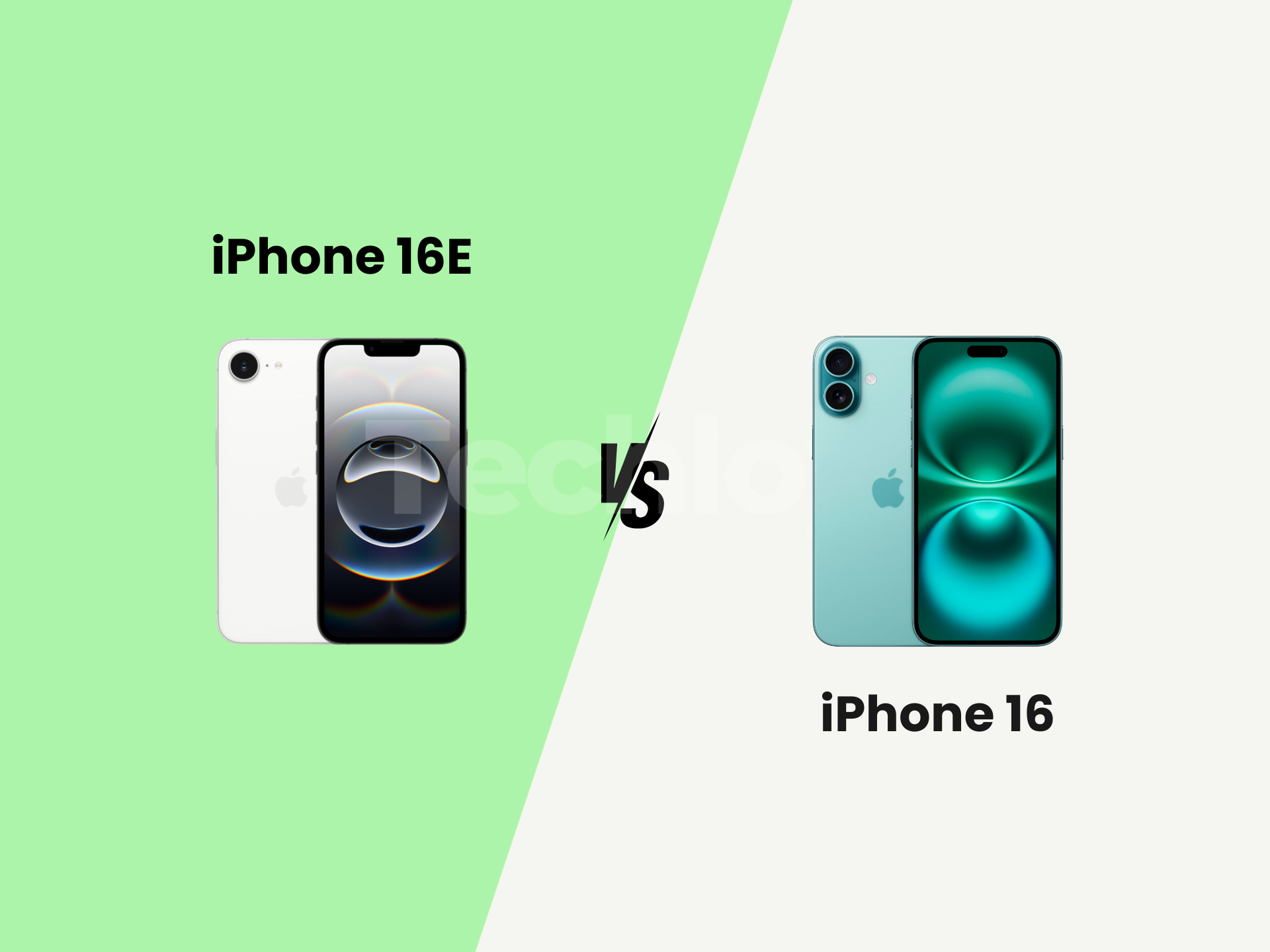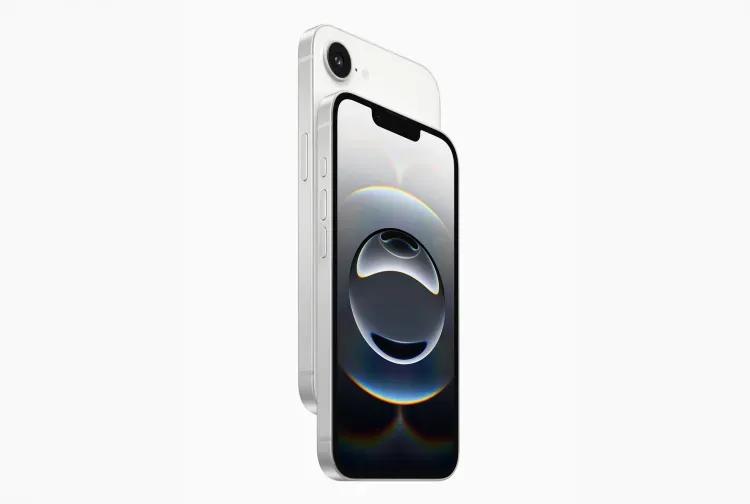iPhone 16E vs. iPhone 16 — A comparison

Apple’s latest event brought an unexpected twist—the iPhone 16E, a model many thought would be the iPhone SE 4. Instead of reviving the SE line, Apple introduced a more affordable entry into the iPhone 16 series.
Despite its lower price tag, the iPhone 16E still delivers many of the core features users expect, including Apple Intelligence, a modern design, and strong performance. However, Apple has made some trade-offs to keep the cost down.
So, is the iPhone 16E worth it, or should you spend extra for the base iPhone 16? Let’s break it down.

Design & Display
At first glance, both the iPhone 16E and iPhone 16 share a 6.1-inch OLED display with a resolution of 1170 × 2532 pixels, ensuring sharp visuals and deep blacks. However, there’s a noticeable difference in how the front looks. The iPhone 16 features Dynamic Island, Apple's interactive display cutout for notifications and live activities, whereas the iPhone 16E sticks to the older notch design. While Dynamic Island improves multitasking and UI fluidity, some users may prefer the familiarity of the notch.
In terms of materials, both phones boast an aluminium frame with a glass back, maintaining Apple's signature premium build. The iPhone 16E comes in Black and White, offering a minimalist aesthetic, while the iPhone 16 is available in Ultramarine, Teal, Pink, White, and Black, giving users more choices to express their style.
RAM & Storage
Performance is a key factor in choosing a smartphone, and Apple ensures both models pack a punch. The iPhone 16E and iPhone 16 both come with 8GB of RAM, ensuring smooth multitasking and snappy performance. As for storage, both models start at 128GB, with higher-tier options available up to 512 GB. While this should be enough for most users, those needing 1TB storage will have to look at the Pro models.
Camera
Photography is one of the biggest differences between these two models and is probably what will make or break the deal for most. The iPhone 16E features a single 48MP wide-angle camera, which delivers high-quality images but lacks the versatility of a multi-lens setup. The iPhone 16, on the other hand, features a dual-camera system, consisting of a 48MP wide-angle lens and a 12MP ultrawide lens. This additional lens allows users to capture broader landscapes and more dynamic shots.
Another key difference is the Camera Control button, which is present on the iPhone 16 but missing from the iPhone 16E. This button provides quick access to advanced photography settings, making it a useful tool for those who frequently shoot photos or videos. Additionally, the iPhone 16 supports spatial video capture, a feature absent in the 16E, but unless you also plan on getting the Apple Vision Pro, this might not mean much to you.
Performance (Chip & AI)
Both phones are powered by Apple’s A18 chip, delivering top-tier performance for everyday tasks, gaming, and AI-powered features. With on-device AI optimizations, users can expect faster Siri interactions, real-time translations, and more efficient photo and video editing.
One notable difference is that the iPhone 16E debuts Apple's first in-house 5G modem, the C1. This modem is expected to improve cellular connectivity and efficiency, potentially reducing power consumption during mobile data usage. The 16E's C1 modem could lead to better cellular performance over time, especially in areas with weaker signal strength. However, this remains to be seen in real-world testing.
Battery Life
Battery life is another major factor when choosing a smartphone. As mentioned earlier, the iPhone 16E features Apple's first in-house 5G modem, the C1, which is designed for better power efficiency. Paired with the iPhone 16e's power-optimized internal design, it outperforms the iPhone 16 in this area.
The iPhone 16E offers up to 26 hours of video playback, four hours more than the iPhone 16. This extra battery life makes the 16e a great option for users who need their phone to last all day without frequent charging.
Both devices support USB-C fast charging, but there’s a significant distinction—the iPhone 16E lacks MagSafe wireless charging. MagSafe allows for faster, more convenient wireless charging and compatibility with a range of accessories, which may be a dealbreaker for some users.
Price
Of course, the pricing is where the iPhone 16E truly stands out. Starting at $599, it’s the most affordable iPhone in the 16 lineup, making it an excellent option for budget-conscious buyers. In contrast, the iPhone 16 starts at $799, positioning it as a more premium device with extra features like a dual-camera system and MagSafe compatibility.
For those who want core iPhone performance at a lower price, the iPhone 16E is a great deal. However, if you're willing to spend more for a better camera, MagSafe, and Dynamic Island, the iPhone 16 arguably justifies its price increase.
Software & Extra Features
Both models will ship with iOS 18, bringing enhanced AI features, a smarter Siri, improved privacy settings, and a customizable home screen. Regardless of which model you choose, you’ll receive software updates for five years, allowing long-term usability.
Conclusion
Both the iPhone 16E and the iPhone 16 offer solid performance, Apple Intelligence, and long-term software support, making them great choices in their own right. However, the decision ultimately comes down to what you value most in a smartphone.
